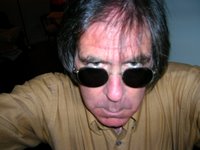Saturday, December 29, 2007
At times it seems as if people have lost the ability to age gracefully. Strategies to turn back the hands of time are published daily in the various media. Plastic surgery, liposuction, hormone therapies, medicines, creams, and salves beyond measure appear on the market constantly. Some people, principally women, starve themselves almost to the point of death to make themselves, at least in their minds, beautiful. A seemingly limitless number of diets are published to help people already under-weight lose even more weight. Unfortunately, a few people cross the line and actually do starve themselves to death. An exception is a 17th century member of minor nobility, Countess Elizabeth Báthory. She believed that she had discovered an efficacious beauty regimen, though perhaps she took it a tad too far. On the 29th in 1610, she was arrested on charges of murder. It seems that since 1585 she had been in the practice of acquainting herself with an unknown number of young women, torturing and then killing them so that she could bath in their blood. By her own estimation, the number of her victims was in excess of 650. As a result, the dear countess was placed under house arrest, a condition in which she would remain until her death on August 21, 1614.
Thursday, December 27, 2007
December 27

If you have ever lived in a building that had low water pressure, or shared a home with one and a half bathrooms, you may have encountered the problem of someone flushing while you were in the shower, the result of which drenched you with very hot water. The first reaction is to lash out at the offending individual who flushed offering strong arguments justifying the flusher’s placement in a spot on the food chain beneath amoebas. The Flushing Remonstrance is, however, a bird of a different feather. It is a document crafted in the 17th century. The Flushing Remonstrance was signed on the 27th in 1657. The document was intended to be a protest against the religious persecution carried out by Peter Stuyvesant in the Dutch settlement in what is today the county of Queens in New York City. It is considered by many to be one of the seminal documents drawn on by the Founding Fathers when they drafted the United States’ Constitution.
Wednesday, December 26, 2007
December 26

Norman Angell was born on the 26th in 1872. He was a British politician, who somehow managed to finagle his way to a Nobel Peace Prize. It seems almost to be an oxymoron to use the word peace in the same sentence as politician but the Nobel committee rarely asks for my advice. Angell’s worldview is perhaps best illustrated by the following quote “Political nationalism has become...the most important thing in the world, more important than civilization, humanity, decency, kindness, and pity; more important than life itself."
Tuesday, December 25, 2007
December 25

"Silent Night" is a traditional Christmas song. Its first performance was on the 25th in 1818 when a choir sang it during Christmas services in the Church of St. Nikolaus in Oberndorf, Austria. The song quickly became a staple of the Christmas season. During World War I, a war that probably set the standard for brutality in the modern era, on Christmas Day in 1914, the song was sung, simultaneously, in English and German, by the troops facing each other near Ypres, Belgium. When they finished singing, the soldiers from both sides exchanged gifts. After gathering, the Germans and the Allies also conducted a group reading of the 23rd psalm. Sadly, after burying their dead it was back to business as usual for both sides.
Monday, December 24, 2007
December 24
 On Christmas Eve, 1906, radio innovator Reginald Fessenden broadcasting from Brant Rock, Massachusetts, made the first radio broadcast containing programming. The broadcast included Fessenden playing Silent Night, on the violin, and reading both poetry and a passage from the Bible.
On Christmas Eve, 1906, radio innovator Reginald Fessenden broadcasting from Brant Rock, Massachusetts, made the first radio broadcast containing programming. The broadcast included Fessenden playing Silent Night, on the violin, and reading both poetry and a passage from the Bible.Fessenden had more than 24 patents issued in his name and was fond of saying “An inventor is one who can see the applicability of means to supplying demand five years before it is obvious to those skilled in the art.”
Sunday, December 23, 2007
December 23

On the 23rd in 1986, pilots Dick Rutan and Jeana Yeager landed their airplane, named Voyager, at Edwards Air Force Base in California. There is nothing particularly interesting in that, except for one little thing: they had taken off from Edwards Air Force Base on December 14. In the interim, they had flown around the planet without landing or re-fueling, becoming the first people to fly an aircraft non-stop around the world. A transcript of the cabin voice recorder indicates that a large portion of the flight consisted of Yeager saying to Rutan, “For crying out loud, just pull over and ask for directions. I don’t understand why you won’t ask someone how to get there. What is wrong with you? It’s not a crime to ask for directions, heck, anyone can get lost. It’s not a big deal; just ask for directions. You never want to ask anyone for directions.”


